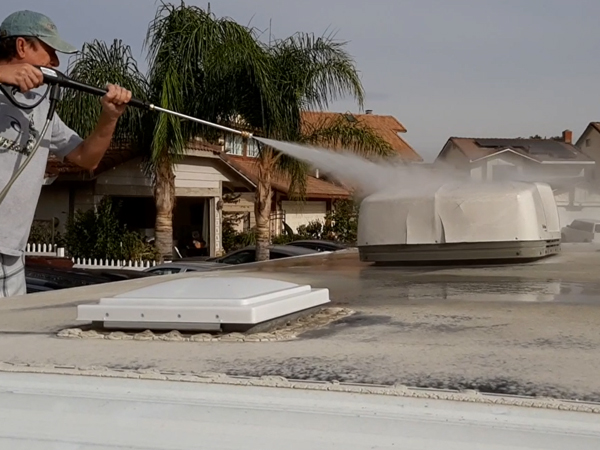When it comes to maintaining your RV, the roof is one of the most important parts. Of course, it is also the one that is most susceptible to damage because of its constant exposure to the elements. Water damage, leaks and cracks, and other issues are more common for RV owners than people think. Fortunately, with the right care and maintenance, you can save yourself a lot of hassle with serious repairs.
First and foremost, don’t panic and go straight to roof replacement. Yes, you may end up needing a new roof eventually. However, most RV issues can be handled with a RV roof repair or recoating, depending on the type of roof that you have. Take a minute to examine what’s going on. Perhaps you found some extra cracks when you cleaned the roof last time. Maybe you noticed some water coming in and are panicking because you don’t know where you overlooked an issue up top. Either way, take a deep breath and assess the situation.
How Bad is the Damage?
Typically, RV roof repair is a feasible option for most issues that people have. Small cracks, leaks, or other damage can happen over time. If you are maintaining your roof properly, you should notice most issues before they become a huge problem, but that may not always be possible. Assess the state of the damage and then you will be able to decide which is the best repair solution. You can find many solutions for small repairs, from new sealant to re-coating a rubber roof, and so much more. First, though, you have to know what needs to be fixed.
Where is the Damage Located?
There are some typical problem areas on RV roofs, which most owners are familiar with and know how to protect with a little extra care and regular cleaning. Seams and the fittings around roof components and accessories, for example, are a prime target for water damage and cracks due to wear over time. Sometimes, there may be damage at a corner or along the edge, which is also quite common. Once you determine where the problem is located, you’ll have a better chance to find the right repair solution.
What Condition is the Roof In Otherwise?
If you have minor repairs but the roof was just re-coated a few months ago, the repairs might be enough on their own. If, however, you notice cracks and repairs that need to be resolved and the roof hasn’t been updated or recoated in 5 or 6 years, it might be time to consider a full recoating. In this situation, of course, we’re talking about the ever-popular EPDM rubber roof that a lot of RVs have. If you have fiberglass or another material, you’ll still want to consider the condition to make sure that you get the right repair solution.
There are several different options on the market today for RV roof repair. Plus, most make it easy for this to be a DIY project, saving you a lot of hassle and money since you won’t have to take the RV to a shop. If you do feel more comfortable letting someone else do the work, that’s fine. However, once you read up on repair and caring for your roof, you might realize that it’s something that you can do on your own, and something worth doing yourself.
Keep these things in mind and you’ll have a much easier time getting your RV roof the repair solutions that it needs, no matter the damage or type of material that is involved.



I am looking for a RV roof coating compatable with the TPO roof on my 2012 Jayco Eagle Superlite. Your articles don’t mention TPO.
Hi yes you would need our TPO base coat first please give our office a call at 610-298-1989 ext 9
thank you
you would need our tpo primer first then the rvroofmagic
thank you